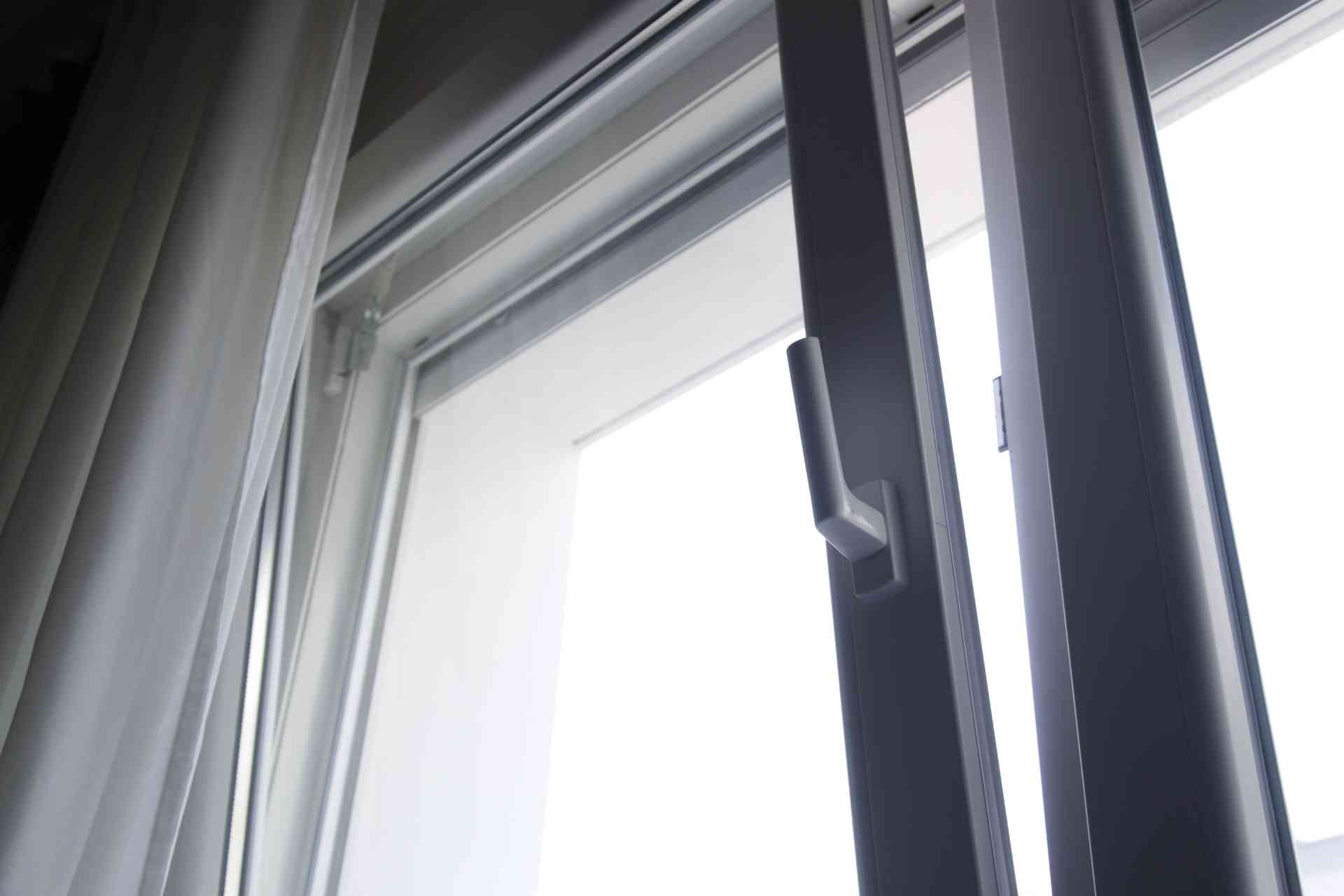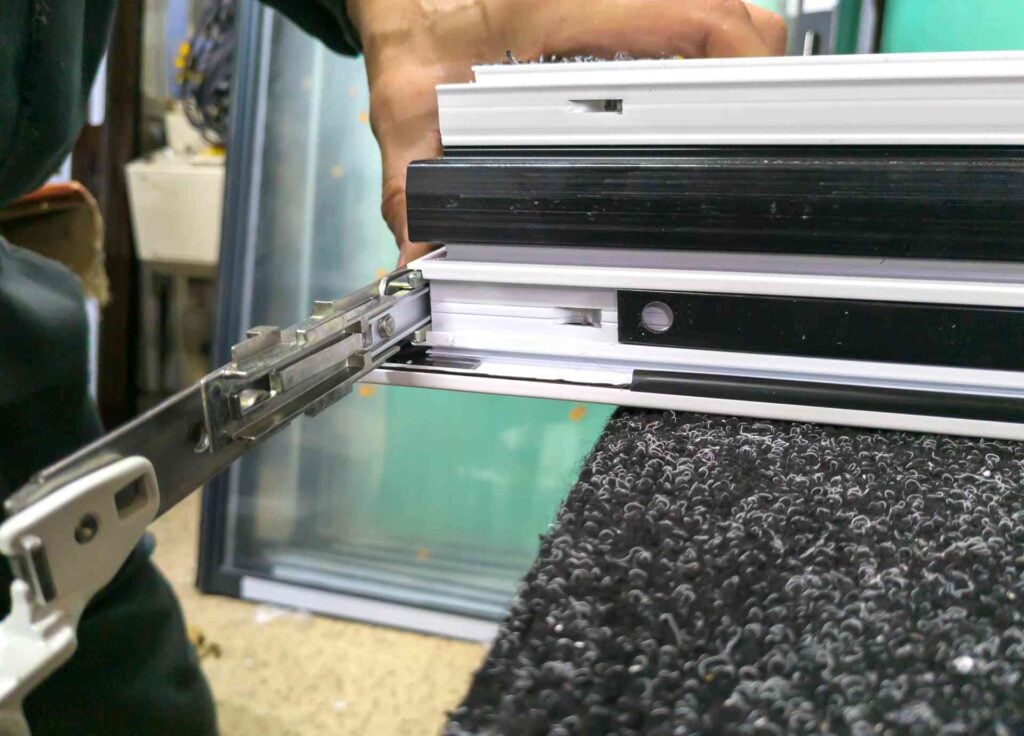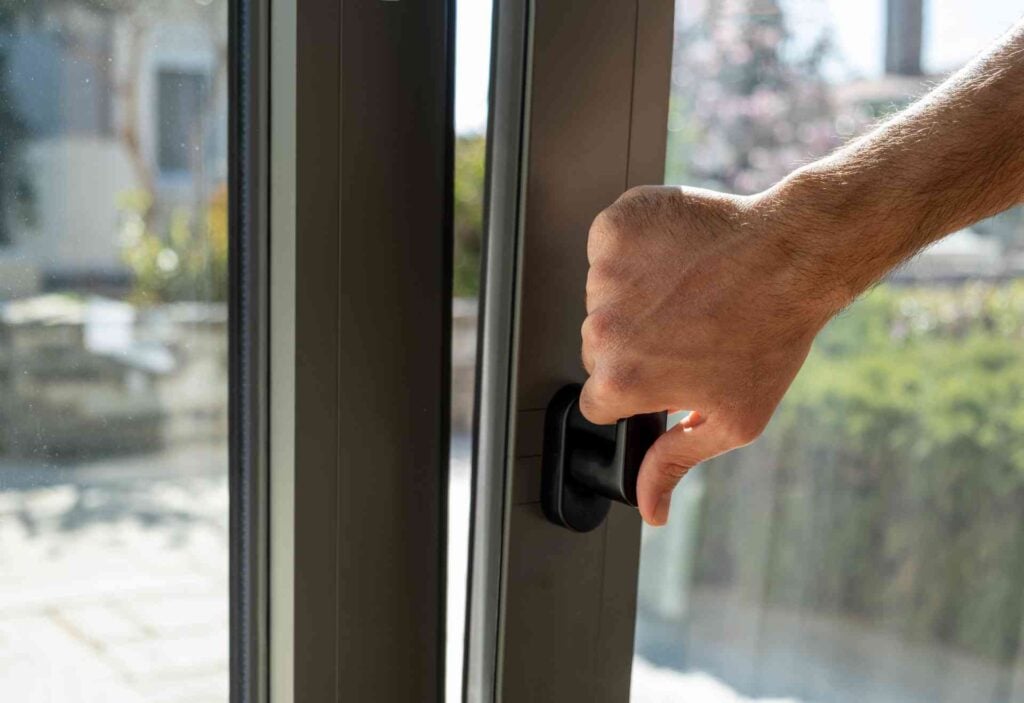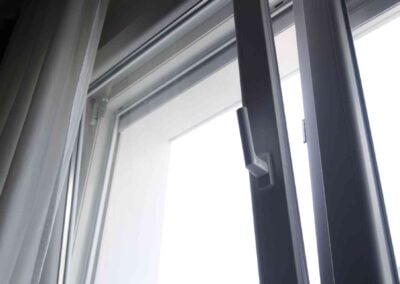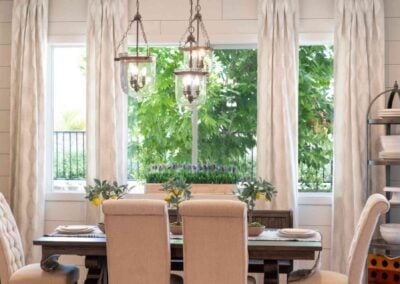Tilt-and-turn windows are becoming a popular choice among homeowners who want a combination of modern style, flexibility, and energy-efficient windows. Inspired by European design, these windows offer a unique dual functionality that allows them to tilt inward from the top or swing open from the side. This versatility provides better control over airflow, easy cleaning access, and a sleek, contemporary look that fits both traditional and modern homes.
In this guide, you’ll learn what tilt-and-turn windows are, how they operate, and why they’re valued for their performance, security, and design advantages, helping you make an informed decision about whether they’re the right fit for your home.
Table of Contents
What Are Tilt-and-Turn Windows?
Tilt-and-turn windows have a dual-action opening mechanism that sets them apart from traditional windows. Depending on how you turn the handle, the window can either tilt inward from the top for gentle ventilation or swing open from the side like casement windows. This makes them adaptable to different needs, whether you want a small amount of fresh air or a wide opening for cleaning and maximum airflow.
These windows are commonly made from vinyl, fiberglass, or aluminum-clad frames, each offering different advantages in insulation, durability, and style. Their design features slim profiles and large glass pane areas, allowing natural light to fill the room while maintaining a clean, modern appearance. Tilt-and-turn windows can be customized in various sizes and finishes to match any home’s architectural style, from classic to contemporary.
How Tilt-and-Turn Windows Work
Tilt-and-turn windows operate through a specialized hinge and handle mechanism that controls two distinct opening functions. When the handle is turned 90 degrees, the sash swings inward from the side like a traditional casement window. When turned 180 degrees upward, the sash tilts inward from the top, leaving a small opening for ventilation while keeping the window secure.
Inside the frame, a system of multiple locking points and concealed hinges allows smooth transitions between the two positions. These precision-engineered parts create a tight seal in the closed position, improving insulation and noise reduction. Because the window opens inward, homeowners can easily clean both sides of the glass from inside the home.
A professional installation is essential to ensure the tilt-and-turn mechanism aligns correctly and functions smoothly. Proper setup guarantees long-term performance, prevents air leaks, and maintains the safety features built into the design.

Schedule a Free Consultation
Get a free home window inspection, talk with one of our design consultants to get product recommendations, and learn about special offers and financing.
Key Benefits and Features of Tilt-and-Turn Windows
Tilt-and-turn windows offer a range of advantages that make them one of the most practical and stylish window options available today.
- Versatile ventilation: The dual opening system lets you control airflow with precision. Use the tilt position for controlled ventilation without full drafts or rain entering, or open the window fully from the side for maximum fresh air.
- Easy cleaning and maintenance: Because the window opens inward, both sides of the glass can be cleaned safely from inside your home. This feature is especially useful for upper-floor windows or multi-story homes.
- Enhanced security: Multi-point locking systems secure the sash tightly at several points around the frame, maintaining security and allowing secure ventilation when the window is partially open.
- Energy efficiency: High-quality tilt-and-turn windows include insulated frames, compression seals, and advanced glass coatings to enhance energy efficiency, reduce heat loss in winter, and keep interiors cool in summer.
- Noise reduction: The airtight seals and thicker glass options help reduce external noise, making them ideal for homes near traffic, schools, or urban areas.
- Modern aesthetics: With their slim frames and wide glass surfaces, tilt-and-turn windows complement both traditional and modern home designs. They provide an elegant, minimalist appearance that suits contemporary home designs.
Common Applications of Tilt-and-Turn Windows
Tilt-and-turn windows fit a wide variety of home layouts and architectural styles, making them a flexible choice. Their inward-opening design and customizable sizing allow for installation in rooms where ventilation, safety, and easy access matter most.
| Application | How Tilt-and-Turn Windows Help |
| Bedrooms | Provide secure nighttime ventilation through the tilt function while maintaining privacy and safety. |
| Kitchens | Allow efficient airflow to clear steam and cooking odors; the full-turn position quickly refreshes the room. |
| Bathrooms | Offer moisture control and privacy with the tilt function, keeping humidity levels balanced. |
| Upper floors | Make cleaning simple and safe since the sash opens inward, eliminating the need to reach outside. |
| Living areas and offices | Create bright, open spaces with wide views and customizable airflow for comfort and productivity. |
| Home additions | Provide precise ventilation control to maintain comfortable temperatures. |
| Multi-family or mixed-use buildings | Ideal for apartments and condos, where space efficiency, safety, and low maintenance are priorities. |
Tilt-and-Turn Windows vs. Other Window Styles
Tilt-and-turn windows stand out due to their versatility, security, and exceptional performance. The table below compares them to four other common window types, helping you understand how each style functions and how tilt-and-turn windows differ from conventional windows.
| Feature | Tilt-and-Turn Windows | Casement Windows | Sliding Windows | Double-Hung Windows | Awning Windows |
| Operation | Tilt inward from the top or swing open from the side | Swing outward on side hinges | Slide horizontally on a track | Upper and lower sashes slide vertically | Open outward from the bottom |
| Ventilation control | Excellent | Good | Limited | Moderate | Good |
| Ease of cleaning | Very easy | Moderate | Easy | Moderate | Moderate |
| Security | Strong | Good | Moderate | Moderate | Good |
| Energy efficiency | Very high | High | Moderate | Moderate | High |
| Space efficiency | Requires some interior clearance to swing inward | Needs exterior clearance | Excellent. No swing space needed | Excellent. Vertical operation saves space | Needs exterior clearance for opening |
| Style compatibility | Ideal for modern and energy-efficient homes | Fits traditional and transitional styles | Works well in compact or modern designs | Classic appearance suited to older homes | Complements contemporary and cottage styles |
| Maintenance | Low | Moderate | Low | Moderate | Moderate |
Tilt-and-turn windows combine high performance, energy efficiency, and ease of maintenance in one design. Compared to other window types, they deliver flexible ventilation, better air circulation, and simple cleaning convenience, making them an appealing choice for homeowners focused on comfort and design versatility.
Tilt-and-Turn vs. Casement Windows
Casement and tilt-and-turn windows both open on hinges but in different directions. Casement windows swing outward from the side, while tilt-and-turn windows can either tilt inward from the top or swing inward from the side. Both provide strong ventilation and energy efficiency, though their operation styles suit different preferences and room layouts. Casement windows are often chosen for traditional homes and areas with adequate exterior space, while tilt-and-turn windows are preferred in interiors where inward access and easy cleaning are priorities.
Tilt-and-Turn vs. Sliding Windows
Sliding windows open by gliding horizontally along a track, making them a space-saving option that works well in compact areas. Tilt-and-turn windows operate on a hinge, allowing both inward tilting for ventilation and full side opening. Sliding windows typically require less interior clearance and are simple to use and maintain, while tilt-and-turn windows can provide more flexible airflow and a tighter seal for insulation. The choice between them often depends on space, ventilation needs, and overall home design.
Tilt-and-Turn vs. Double-Hung Windows
Double-hung windows feature two sashes that slide vertically, allowing airflow from the top, bottom, or both. Tilt-and-turn windows open inward from the top or side, offering different control over ventilation and cleaning access. Double-hung windows are commonly found in traditional homes and conserve space with their vertical design. Tilt-and-turn windows, often used in modern designs, provide a wide opening and straightforward cleaning from inside. Each style has unique advantages depending on architectural preferences and performance goals.
Tilt-and-Turn vs. Awning Windows
Awning windows hinge at the bottom and open outward, providing ventilation even in light rain. Tilt-and-turn windows open inward and can also tilt from the top, giving them a different approach to airflow and accessibility. Awning windows are popular in smaller spaces such as bathrooms or above sinks, while tilt-and-turn windows are often used in rooms where full inward access is preferred for cleaning or versatility. Both types can provide effective ventilation and energy efficiency, depending on placement and design priorities.
Maintenance and Longevity of Tilt-and-Turn Windows
Tilt-and-turn windows are designed for durability and ease of care, combining high-quality materials with precision-engineered hardware. Their inward-opening design makes routine cleaning simple since both sides of the glass are easily accessible from inside the home. Regular upkeep mainly involves wiping down the frames, cleaning the glass, and lubricating the hinges and locking points once or twice a year to ensure smooth operation and minimal maintenance.
Because they use multi-point locks and compression seals, these windows maintain tight insulation and secure closure over time. Their strong seals also support excellent thermal performance, helping maintain stable indoor temperatures and reduce energy use. When properly installed and cared for, high-quality tilt-and-turn windows can last 30 years or more without significant wear. Choosing materials like vinyl, fiberglass, or aluminum-clad frames can further extend longevity while minimizing upkeep and improving energy rating results.
Are Tilt-and-Turn Windows Right for Your Home?
Tilt-and-turn windows are a great choice for homeowners who want versatility, energy efficiency, and modern design in one package. Their ability to open in two ways makes them ideal for nearly any room, whether you need gentle airflow in a bedroom, easy cleaning access in an upper-floor space, or full ventilation in a kitchen or living area. The tilt feature provides safety and convenience for homes with children or pets, while the turn function allows wide openings for fresh air to move through the entire window.
When deciding if tilt-and-turn windows are right for your home, consider your priorities for comfort, security, and style. They’re especially suited for energy-conscious homeowners and those who want to lower energy consumption, maintain stable indoor temperatures in cold climates, and improve year-round comfort. If you prefer a clean, modern look that performs as well as it looks, tilt-and-turn windows are an investment that enhances both everyday living and long-term home value.
Discover How Tilt-and-Turn Windows Can Enhance Your Home
Tilt-and-turn windows offer the perfect balance of performance, comfort, and design flexibility for modern living. If you’re ready to improve ventilation, energy efficiency, and the look of your home, our team can help you find the best window styles for your space.
Schedule an in-home window consultation with Lake Washington Windows & Doors to explore high-quality options, get expert guidance, and see how new windows can help lower your energy costs while enhancing comfort. When you’re ready to choose tilt for your next window upgrade, our experts will ensure professional installation and lasting performance that elevates your entire home.




